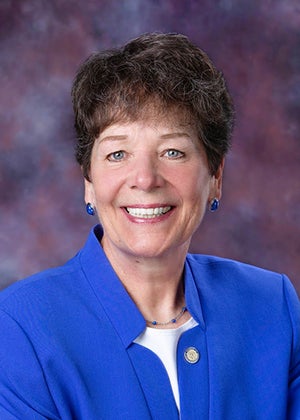Capitol Comments: Minnesotans will pay plenty to provide ‘free’ college
Published 8:45 pm Friday, May 19, 2023
|
Getting your Trinity Audio player ready...
|
Capitol Comments by Peggy Bennett
We’ve all heard the saying, “if it sounds too good to be true, it usually is.”
Certain legislation at the Capitol falls perfectly into that category. Some things sound good on the surface but digging into the details can reveal a different picture.
Analyzing the specifics and potential current and future ramifications is one of my main jobs as a legislator.
A brand-new program called “Northstar Promise Free College” which provides “free” (taxpayer funded) college at a public post-secondary institution in our state for qualifying students, has plenty of these ramifications.
Students from families that have an adjusted gross income less than $80,000 can attend college for “free.” Sounds good, right?
Unfortunately, there are many problematic issues with this measure, as taxpayers will spend more than $215 million to provide this “free” college and create and fund yet another new government bureaucracy to operate the program to absorb much of our hard-earned tax dollars — let’s get needed education dollars to students, not bureaucracies.
Basically, the idea provides a perverse incentive for people hovering around the $80,000 threshold to work less. If a family makes even $1 too much, they are completely cut out of the program and do not qualify. How many families will decide that it would be better not to choose to take on more hours or a better paying job because it would interfere with qualifying for this program?
Students are only required to take 1 credit to receive this benefit, with no requirements to work toward a marketable degree, which would build the workforce in ways we need. This a not a responsible use of taxpayer money.
Considering this bill was never even heard in a House committee much less debated, there are plenty of questions that remain unanswered. Who qualifies for this freebie when parents have two separate incomes? What about kids who have claimed their independence? What about families who move here from another state and establish residency just to take advantage of the program? And what of those who choose to work in another state immediately after graduation?
For the record, I’m not opposed to helping those who cannot afford higher education, but it needs to be done in the right way. Minnesota already has an established grant program to deal with this issue. The current grant program allows families and students to choose the higher education institute that best fits the needs of the student. This could be a public institution or an accredited private institution. It bases eligibility on a sliding scale — those with the most need get the most aid where those who can afford to pay a portion should pay a share. This is a more responsible use of taxpayer dollars.
In order to pay for this program, the bill cuts funding for grant programs to teachers that help deal with the teacher shortage and also grant programs aimed at the healthcare worker shortage. Why would we do that when we can utilize and add more funding to the current higher education grant program?
There is no need to create a new and expensive program that has fewer accountability guidelines and less choice for families and students, yet that’s exactly what Democrats have decided to do.
At the same time, nothing is being done to rein in the actual costs of higher education. Once again, the government is just going to pour more money into the University of Minnesota and state colleges. There are no accountability measures for higher education institutions and no efforts to improve the quality of education.
The bill does nothing to curb the out-of-control costs of tuition that have far surpassed the rate of inflation or implement any real reforms.
But there is “free” college that, in actuality, will cost Minnesotans plenty.
Peggy Bennett, R-Albert Lea, is the District 23A representative.


